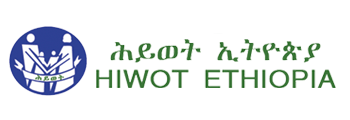Communication for Health, a current project being funded by John Snow Inc. (JSI/JHU), is receiving funding from USAID in order to increase knowledge and beneficial practices concerning health through Social and Behavioral change communication (SBCC) approach in the East Gojam Zone of Amhara. This project mainly focuses on multiple health areas including: reproductive health, maternal newborn and child health (RMNCH), Malaria, Tuberculosis (TB), WASH, Mother to Child Transmission of HIV (PMTCT) and Nutrition.
The proposed project works to address the following objectives.
1. To increase knowledge and healthy practice of community members across the 6 health areas through implementing SBCC activities at seven Woredas in North Showa Zone in 21 months (January 2018- September 2019).
2. To enhance and sustain SBCC through engaging health offices/facilities, health extension workers (HEW) and schools in its implementation at seven Woredas in North Shewa Zone in 21 months (January 2018-September 2019).
3. To improve the use of data for decision making in SBCC across the seven target Woredas in North Shewa Zone in 21 months (January 2018-September 2019)
Program approach
The project implementation approaches comprise of community mobilization, awareness raising for behavior change, community based age segmented and status oriented discussions and/or dialogues, and capacity buildings including trainings and engaging male as a cross-cutting strategy for gender equality. The approaches are intended to address target beneficiaries through SBCC across the six health areas for the positive health behavior practice of target beneficiaries to become healthy, happy and productive. The approaches focus to address the six health interventions around specific circumstances and life stages of the target beneficiaries. The implementation of the approaches focuses on the targets’ health information needs, timing and ability to take health related actions at the most appropriate times, so that they will have information and knowledge necessary to make positive choices about their lives from RMNCH/FP problems and communicable diseases including mother to child transmission of HIV, malaria and tuberculosis. The approach further enables the target communities to use potable water, keep personal hygiene and sanitation and follow adequate nutrition. Besides, the wider community is informed about the issues and is therefore able to create a supportive and positive and healthy environment for the development of the community particularly women, children and youth.
Target beneficiaries and impact of the Program on beneficiaries
The direct target beneficiaries to the proposed project are currently married couples (700 wives and husbands each), 1400 pregnant mothers, 1400 mothers with children aged up to 6 years, 1400 children, and 1400 adolescents and youth (50% female). While at least 6,300 will be direct targets to be reached by the intervention, community based organizations, religious leaders, health extension workers and professionals, health offices and health posts will indirectly benefit from the project. The program implementation impacts the practice of positive health seeking behavior across the six health areas. The program will benefit the young unmarried youth to prevent SRH related risk behaviors, life skills, hygiene, nutrition and communicable disease prevention methods. The married couples will be able to benefit on good husband-wife communication to jointly plan for the future household management, RMNCH/FP, hygiene, nutrition including during pregnancy, safe delivery, optimal breastfeeding and commentary feeding practice, delaying first birth, optimal spacing between births and adoption of modern contraceptives, prevention of mother to child transmission of HIV and communicable diseases including malaria and tuberculosis. Mainly the program sought to bring better health condition and wellbeing of the community at large.
Expected Results
As a result of the intervention, better communication and shared responsibility will be created between household members (mainly husband and wife) and the community on the six health areas; children and youth are informed and empowered on the healthy practices; and there will be better and consistent client oriented services across the six health areas. Quality and appropriate health information and services delivered and communicated to in school and the wider community. In addition, proactive multi-sectoral networks at the local level are created and functional. The detail results are provided as outcomes in the causal framework section.
